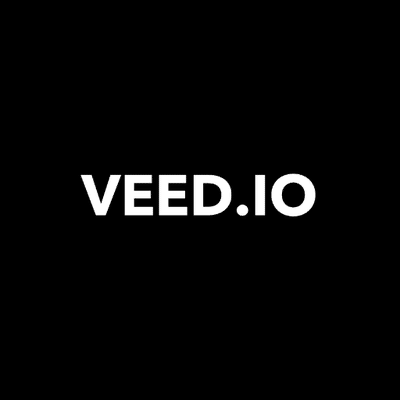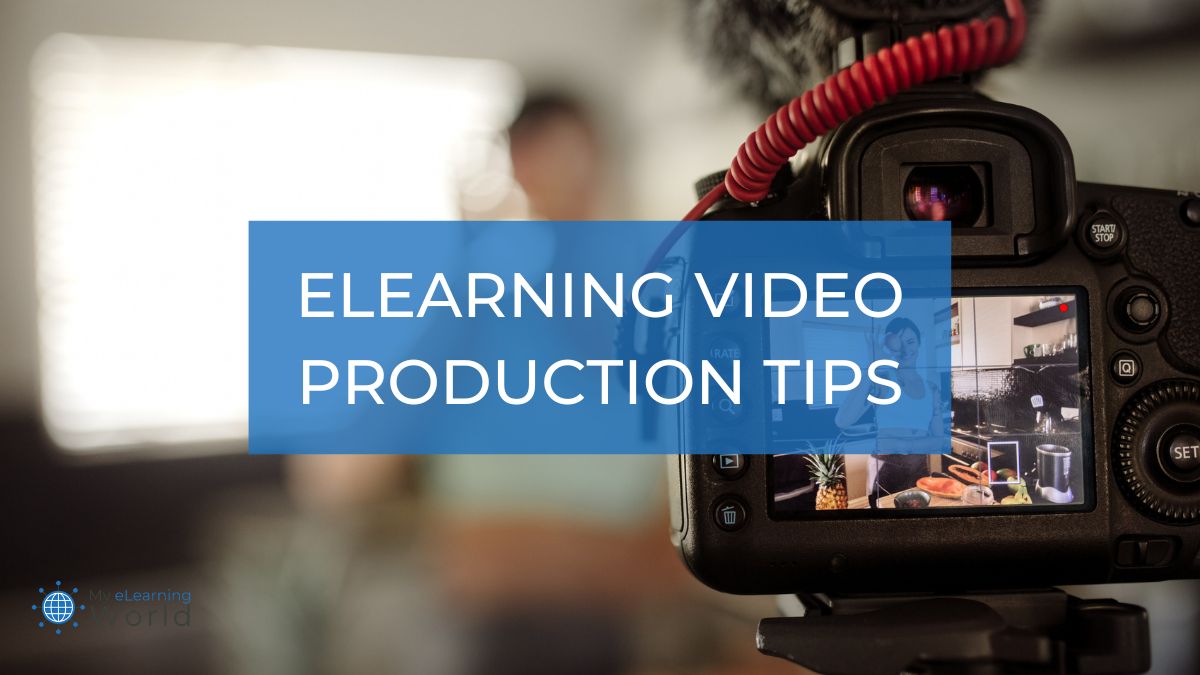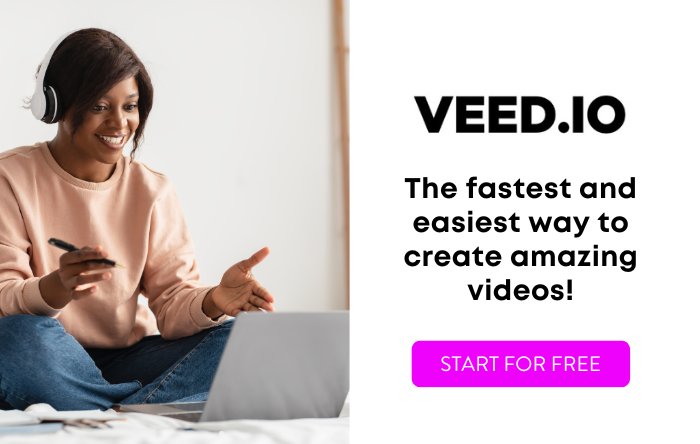Technology has reshaped the way we approach teaching and learning. As Donna J. Abernathy, former editor of Training & Development Magazine, put it, “Online learning is not the next big thing, it is the new big thing.”
Here’s a staggering fact: The latest reports predict there will be over 1 billion learners engaged in online education globally by 2027? That’s 12.8% of the world’s population harnessing the power of eLearning to enhance their knowledge and skills.
And when it comes to what’s driving this educational transformation, video content is leading the way, captivating learners in ways traditional methods often struggle to match. In this article, I’ll go into the eLearning video production process, providing insights and practical advice to create gripping and impactful educational content by using a proven process and powerful tools like VEED.
Understanding the eLearning Video Production Process
Pre-production Planning
You’ve probably heard the saying, “Fail to plan, plan to fail.” That absolutely applies here.
The groundwork of any effective eLearning video is laid during the pre-production phase.
This involves careful preparation, including defining learning objectives, recognizing the target audience, and making a great script. Consider using mind maps or storyboards to visualize the flow of content and guarantee a logical and comprehensible structure.
I believe pre-production planning is most important and a vital stage in the development of an online course video. Detailed preparation and organization helps ensure a successful outcome.
Here’s a breakdown of key considerations and steps involved in pre-production planning for an online course video:
- Defining Objectives: Before making an online course or course video, you need to have a crystal clear understanding of what you want to achieve with this course or video.
- Identifying Audience: You need to understand who your target audience is so you can create content that fits their needs and interests. Define the demographics, their preferences, and their learning behaviors. Just imagine making an online course video for a remote village where people are not that educated and using complex structures that won’t be understandable by the local community is simply futile. It defeats the purpose of accessible education, hindering the potential impact of the content and disconnecting from the intended audience.
- Budgeting: Never start the work without knowing the budget. Always consider the available budget for video making, equipment expenses, software finances and other costs as may apply. If you’re investing $1000 in a project with a budget capped at $500, not only is it futile, but it also signifies a misallocation of resources, undermining the financial efficiency and overall viability of the endeavor
- Scriptwriting: Too many times, course creators think they can just wing it instead of scripting their content. The problem is this can lead to incoherent content that misses the mark. A good script acts as the blueprint for your video, ensuring that every piece of content is purposeful, coherent, and effectively delivers the intended message. Without a well-constructed script, creators risk producing videos that are disjointed, difficult to follow, and ultimately fail to engage the learner or meet educational objectives.
- Scheduling Shoots: If you record for a limited time of a day only, schedule shoots. Same is the case if your course includes paid instructors other than yourself. Scheduling lets you make accessible content at periodic instants.
- Practicing: Teachers always say, practice makes perfect. Practice and rehearse once or twice before you record. It refines script and sequence in unexpected ways. Practicing allows you to familiarize yourself with the material, making it easier to deliver your message confidently and coherently. It helps in smoothing out any rough patches in the script, ensuring that transitions between topics are seamless and logical. This rehearsal time also provides an opportunity to refine your tone, pace, and emphasis, which are crucial for maintaining learner engagement and facilitating understanding.
Selecting the Right Equipment
Creating high-quality eLearning videos requires careful consideration of the equipment you use. That’s not to say that you need to spend an arm and a leg on your setup, but you do need to make sure you’re getting the right pieces in place to set yourself up for success.
Here’s a thorough guide that covers various aspects of getting the accurate equipment for eLearning online course video making:
- Good Camera: Invest in a good-quality digital camera with at least 720p video recording ability. This ensures clear and crisp video quality. Select a long-recording video camera with reliable autofocus for ease of use and manual focus capability for further control over the focus points.
- Suitable Lighting: Use soft box lighting to attain even and soft lighting. This reduces sharp shadows on your face, producing a professional appearance. Implement a lighting setup to brighten your face and background effectively.
- Pleasant Background: Pick a tidy and neutral background to avoid distractions. Consider using a green screen for a more elegant appearance, letting you to swap the background in post-production.
- Steady Tripod: Use a strong tripod to keep your camera steady and prevent instable video. This is central for keeping a professional appearance in your videos.
- Innovative Software: Use professional video editing software for post-production editing and enhancing the overall quality of your videos. While there are lots of solid choices out there, VEED is one of our favorites on this site. VEED has a ton of features that make it easy to create polished eLearning videos, allowing you to record your screen, slides, and webcam to create professional videos that would otherwise take hours to produce. You can even automatically add subtitles or use text-to-speech if you don’t feel like talking. And if you’re camera shy, you can even create your own AI avatar and transform your text into stunning videos. It’s an incredibly powerful way to use AI in your eLearning video production. Check out our VEED review to learn more.
- Strong Connectivity: Ensure you have a steadfast and fast net connection to upload and stream your videos without stoppages.
- Feasible Ergonomics: Invest in a comfortable chair or standing desk to maintain good posture during recording sessions.
- Testing and Adjustments: Always test your equipment before videorecording to detect and resolve any issues. Be prepared to make changes to lighting, sound, and camera settings during the recording of the course to attain the best results.
Creating Engaging Visuals
The need of pictorial side is supreme in eLearning videos. Apply visuals, animations, and on-screen text to enhance the visual experience. Use visuals that complement the content and aid understanding. A tool like VEED makes it easy to create beautiful videos that are visually pleasing and highly effective.
Here are some tips to keep in mind:
- Use Consistent Branding: Uphold a constant visual uniqueness, including colors, fonts, and logos. Make a consistent look that aligns with your course branding, creating a professional and identifiable presence.
- Choose Appropriate Visual Elements: Select visuals that match the course content, such as figures, graphs, infographics, and pictures. Include a diversity of pictorial elements to cater to different learning styles and preferences.
- Design Clear and Brief Slides: Keep slides orderly with a focus on simplicity and clearness. Use bullet points, signs, and short sentences to convey material efficiently.
- Ensure Readability: Choose readable fonts and apt font sizes for text. Consider color contrast to improve legibility, guaranteeing that text is distinct from the background.
- Add Human Element: Infuse a human touch into your content by incorporating teacher presence, testimonials, or relatable scenarios. Elevate the learning experience by seamlessly integrating video clips featuring instructors explaining crucial concepts, establishing a genuine and personal connection with your audience.
- Inspire Interaction: Integrate collaborative elements, such as tests, polls, and discussions. Use visuals to stimulate engagement and input, encouraging a livelier learning experience.
- Optimize for Mobile Viewing: Make sure that visuals are optimized for different devices, particularly mobile screens. Test the course on different platforms to ensure a seamless experience for all learners, including mobile learning students.
Recording Clear Audio
Even if the visuals are up to the mark, bad audio can make it all ineffective. To maintain a clear voice quality is a must in course videos. Afterall, it is a matter of clear understanding at a learner’s end.
- Quality Audio: Invest in a good mic for clear and crisp audio. Remove background noise during recording. It is sometimes suggested to consider adding background music to enhance engagement, but it is limited to the videos that only include visuals for content delivery and not the teacher’s voice.
- Engaging Primers: To craft an appealing video, instructors must start it in a manner that instantaneously captures the learner’s attention. The subsequent challenge is to sustain this engagement through various compelling techniques.
- Chunking Content: For learner to grasp the content properly, it is necessary to divide topic into chunks. Most successful online courses you would see have either short videos or a periodic fragmentation of the topic. Add visual cues to indicate transitions between topics.
- Optimize Speed: Maintain a stable pace to keep learners engaged. Avoid extended monologues without apt amount of time in between for the content to sink in.
- Final Checks: Always ensure the accuracy and authenticity of all content. Conduct thorough checks for potential technical issues or errors. Take a preview of the video through the lens of a learner to understand its effectiveness. Test the video across various browsers and devices, ensuring compatibility with diverse eLearning platforms.
Editing for Impact
Post-production is where the magic happens. Edit your video to enhance pace, eliminate needless elements, and ensure a refined final product. Add transitions, captions, and annotations to strengthen important points. Keep the video length brief to maintain viewer engagement.
For a user-friendly experience, try VEED, a versatile online video editing platform. VEED offers an easy interface with features such as automated subtitles, real-time collaboration, and customizable templates. Its simplicity makes it available for educators and learners alike, allowing them to create and edit videos smoothly.
 VEED - Edit, Record & Livestream Video - Online
VEED - Edit, Record & Livestream Video - Online
VEED is the fastest and easiest way to make high quality, professional videos for eLearning, business training, sales presentations, and other applications.
Final Thoughts
The blend of education and technology has steered into a new era of learning, making education more reachable and appealing than ever before. The eLearning video production process plays a key role in this revolution, letting educators to create content that fascinates and resonates with learners.
By embracing the pre-production planning, selecting the right equipment, creating engaging visuals, capturing clear audio, and mastering the art of editing, educators can craft eLearning videos that surpass traditional teaching methods. In this digital world, tools like VEED further empower educators to enhance their videos seamlessly, contributing to the ongoing transformation in education.
Now, go and create great course videos!


